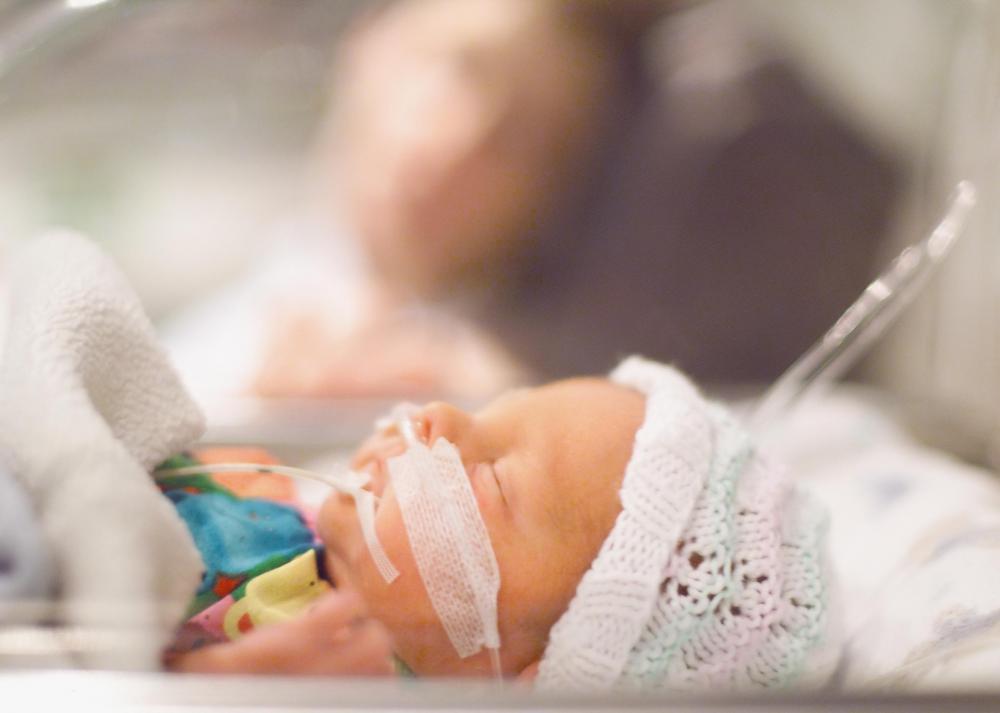At WiseGEEK, we're committed to delivering accurate, trustworthy information. Our expert-authored content is rigorously fact-checked and sourced from credible authorities. Discover how we uphold the highest standards in providing you with reliable knowledge.
What is Protein S Deficiency?
Protein S deficiency is usually an inherited, though it can also be acquired, disorder that affects the body's ability to prevent blood from clotting in abnormal patterns. This is a very rare disease, that untreated, can be highly dangerous. It can result in people having a greatly increased risk for thrombosis or blood clot formation. This is turn elevates the risk for stroke and conditions like pulmonary embolism (a blockage of a pulmonary artery). The disease is often manageable when diagnosed, but it is rare and may not be diagnosed until a first blood clot incident, unless family history of the disease is very evident and clearly known.
Several different types of Protein S deficiency exist, which may affect the degree to which the condition gets expressed. These are called Types I, II and III or alternately Types I, IIa and IIb. Protein S, which aids the work of Protein C, has two different forms in the body called free and bound forms; the disease gets expressed mainly because of what the free forms are able to do. For instance, in Type I, free S isn’t present in high enough amounts to help C, in Type II free S is not constructed properly and can’t do its job at all, and in Type III free S quantity is too low. The difference between Type I and III is that in Type I bound S is also too low, but is available in normal amounts in Type III.

As previously stated, the Protein S deficiency is rare and there may be no thought to look for it unless some conditions like blood clotting begins, often in the form of illnesses like deep vein thrombosis (DVT). The first symptoms could be a blood clot, and this can occur as early as in the 20s. Prior to that, people may have not symptoms at all and may not notice anything different.

Once Protein S deficiency is diagnosed, treatment course is usually very clear. Most people are put on anti-coagulation medications. The obvious choice for this is warfarin (Coumadin®). Warfarin levels do need to be managed carefully. Other medications may be more appropriate during pregnancy, a common time when this condition might get diagnosed. There are women who do have this condition and can with skillful management have children, though elevated risk may exist.

While this condition may be most common in inherited form, people can have this deficiency induced by varying factors. Warfarin, the very medication used to prevent clotting, sometimes causes lower levels of Protein S. Pregnancy, birth control pills and estrogen therapy drop S levels too. On the inherited side, there is a severe form of Protein S deficiency, which may occur when people inherit two defective genes for Protein S from parents. This can cause a disease called Purpura fulminans, which is easy to diagnose in the newborn, since it creates grave illness in babies and will result in fatality without immediate treatment.
AS FEATURED ON:
AS FEATURED ON:














Discussion Comments
@rundocuri- A person may realize that something could be wrong because a family member has a blood clotting problem. Because problems such as protein s deficiency are often hereditary, anyone who is aware of such issues in his or her family should seek a medical evaluation.
Anyone who suspects she has a protein s deficiency should seek medical attention as soon as possible. When blood clots form, there are often no symptoms, and the results can be very serious. Blood tests are some of the first diagnostic tools that physicians will use to determine if a person has a deficiency that could lead to the formation of blood clots.
Post your comments